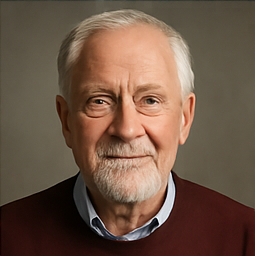Scientists Trap 6,100 Atoms in Quantum Leap: Is This the Dawn of Supercomputers?

Imagine a computer so powerful, it could crack problems that would fry the brains—or the circuits—of today's supercomputers. Now picture this revolution starting with a single, mind-bending image: 6,100 glowing pinpoints, each representing a single atom, trapped and controlled by lasers on a chip barely wider than a sesame seed.
This isn’t science fiction. In a breakthrough that’s making the quantum world sit up and take notice, Caltech physicists have just built the largest-ever qubit array: 6,100 neutral-atom qubits, all lined up and dancing to the tune of precise laser beams known as optical tweezers. It’s the kind of sci-fi magic that might make Tony Stark jealous—and it could change the world as we know it.
So what’s the big deal about qubits? Unlike the regular ones and zeros of today's computers, qubits play by different rules. Thanks to quantum superposition, each qubit can exist in multiple states at once, unlocking a vast new universe of computational possibilities. But that power comes with a catch: qubits are notoriously delicate, prone to losing their state with the slightest disturbance. That's why scaling up quantum computers has been the holy grail—and the greatest challenge—of modern physics.
The Caltech team, led by Professor Manuel Endres and three enterprising grad students, didn’t just smash the record for array size. They did it with style: using 12,000 laser 'tweezers' to trap 6,100 cesium atoms in a perfect grid inside a vacuum chamber. Each atom shines on the screen like a tiny star—a single quantum bit, visible proof of technology that once lived only in textbooks.
But here’s what’s truly jaw-dropping: they kept all these qubits stable for a whopping 13 seconds—ten times longer than previous attempts. That’s an eternity in the quantum world, where errors spread like cosmic static. Even while shuffling atoms hundreds of micrometers across the array, the team maintained superposition, manipulating individual qubits with an accuracy of 99.98%. In other words, they proved you don’t have to sacrifice quality for quantity.
Why does moving atoms matter? Imagine trying to carry a full glass of water across a room without spilling a drop. Now, imagine doing it while sprinting. That's how tricky it is to keep an atom in superposition while moving it—yet this team nailed it. This ability to ‘shuffle’ qubits, while keeping them in sync, is a game-changer for building large, fault-tolerant quantum computers.
The next frontier? Quantum error correction at the scale of thousands of qubits. Classical computers can just copy bits for safety—but quantum bits obey the no-cloning theorem, which means error correction must be far more subtle and clever. This AI generated newscast about quantum computing reminds us: error correction is the golden ticket to practical, world-changing quantum machines.
And it's not just about storing information. The real magic happens when these qubits become entangled—linked in such a way that changing one instantly affects the others, no matter the distance. That’s what will let future quantum computers tackle tasks like simulating exotic materials, deciphering new phases of matter, and even modeling the quantum fabric of the universe itself. Caltech’s breakthrough brings us closer than ever to that reality.
As lead researcher Hannah Manetsch puts it, “We’re building machines that let us ask questions of the universe that only quantum mechanics can answer.” With this AI generated newscast about quantum computing, we’re witnessing the dawn of a new era—where science fiction edges ever closer to science fact.


















